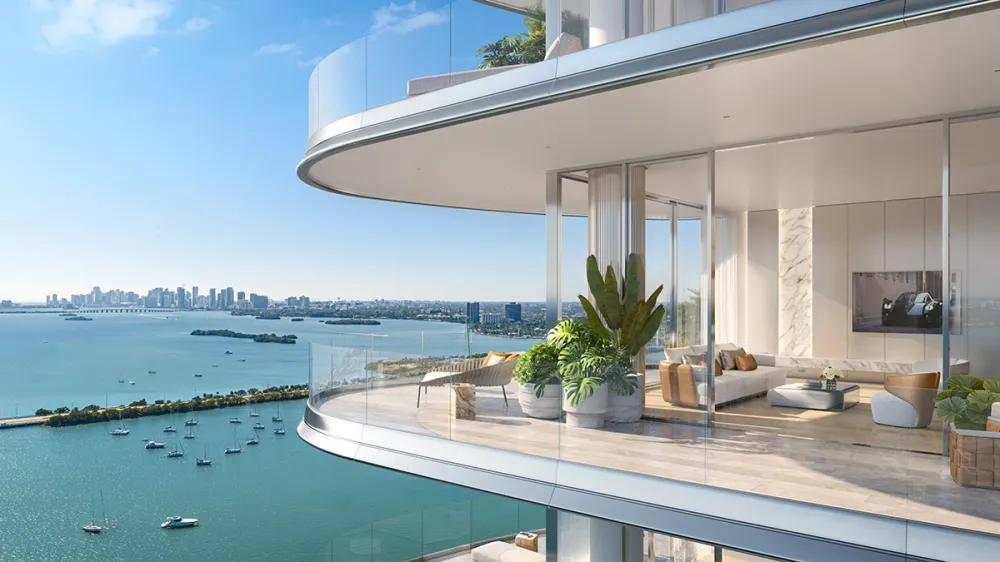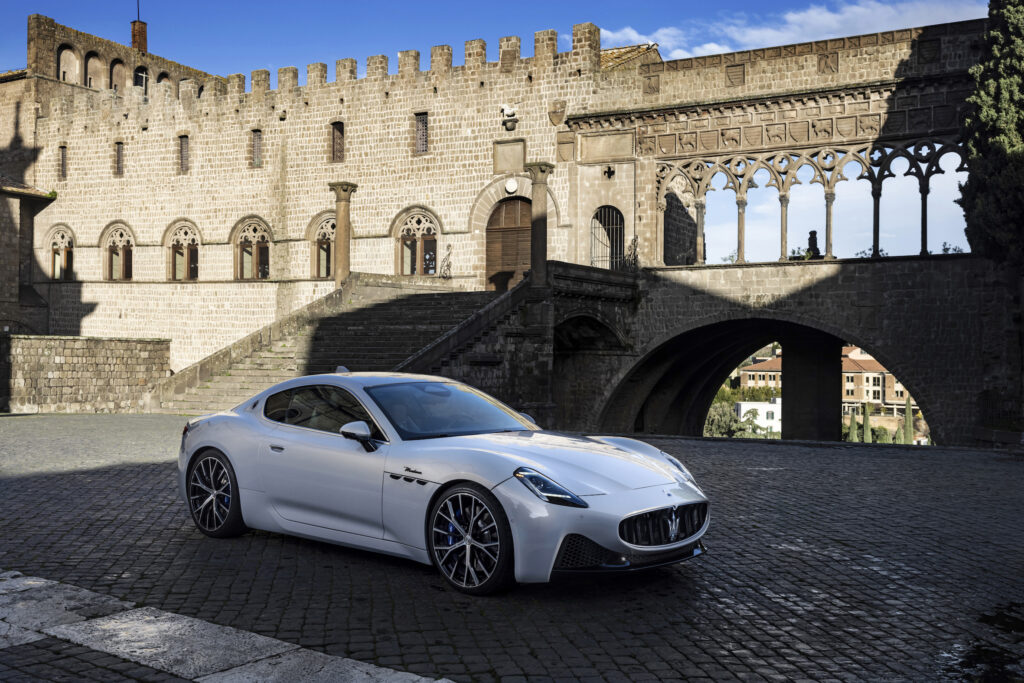Premium marques such as Bugatti and Pagani are bringing the aerodynamic curves and bespoke craftsmanship of automotive design to residential projects around the globe.
The concept of luxury branded residences was birthed in 1919 on New York’s Upper East Side, when the fashionable Hotel New Netherland collaborated with the venerable Sherry’s restaurant on what would become Fifth Avenue’s Sherry-Netherland apartment hotel. It took decades, however, before the idea took on any momentum.
In the 1990s, competing Four Seasons- and Ritz-Carlton-branded residences kick-started the hotel-anchored trend in cities like Boston, Los Angeles and Miami. With their unexpected successes invigorating once-forgotten FiDi districts in these metropolises, other top-tier hotel brands quickly got in the mix, including Aman, Mandarin Oriental, Nobu and Raffles.
In the past decade, the market segued from simmer to boiling point with fashion houses such as Armani, Roberto Cavalli, Karl Lagerfeld, and Fendi, as well as jewelry brands Bulgari, Baccarat and Jacob the Jeweler announcing glittery branded projects in booming international hot spots like Miami and Dubai, fomenting a 150-percent surge in luxury-branded residencies during that time span.
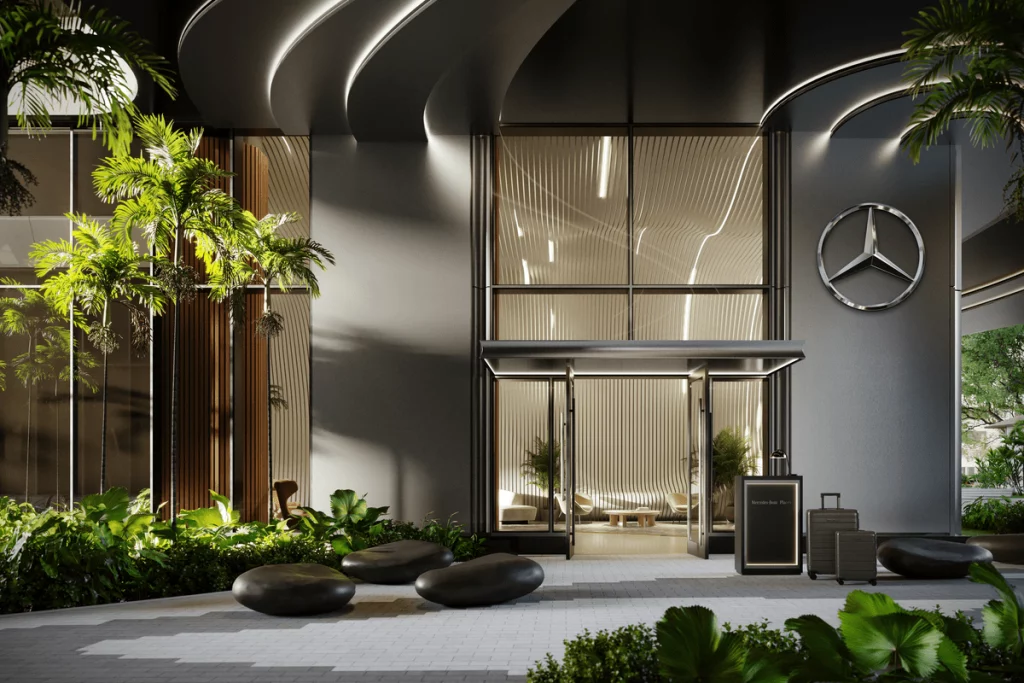
A new and unexpected sector has in recent years zoomed into the luxury branded residences sector: automotive manufacturers. Porsche, Bentley, Bugatti, Aston Martin, Mercedes-Benz, and even niche builders Pininfarina and Pagani have now announced plans to build their own high-design, high-power residences.
The reason is simple: luxury branded residences add an expected value of 20 percent to 40 percent over comparative nonbranded residences. And considering the added cost to developers, which according to Executive Vice President of Gibson Sotheby’s International Realty Michael Carucci averages about 8 to 10 percent per property, the financial advantages are clear.
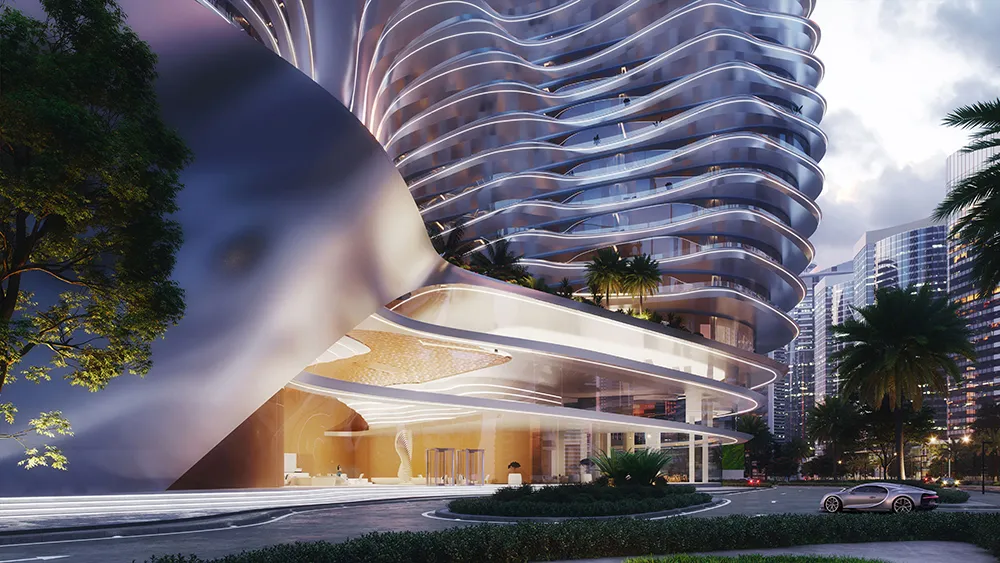
“Think of it as like a Good Housekeeping Seal: people feel familiar with these brands, and there’s an established level of trust,” Carucci explains, highlighting why each party benefits. “Brands do it for the additional revenue, and of course the exposure, while the developers do it for product differential. When developers come to the market, especially in places like Miami and Dubai, where you have a massive saturation of new developments, they want to stand out.”
“We want to offer a wider experience. Bugatti is the pinnacle of automotive, but we think we can offer that experience in other categories as well,” Bugatti CEO Mate Rimac tells Robb Report. “So, for example, in housing, especially in Dubai, where people are striving for the top, we found an interesting opportunity to build a Bugatti building and bring the French luxury flair to Dubai. That was the idea: if we give our designers the creative freedom to apply what we do with a Bugatti hypercar into a building, how would it look like? This is the result.”
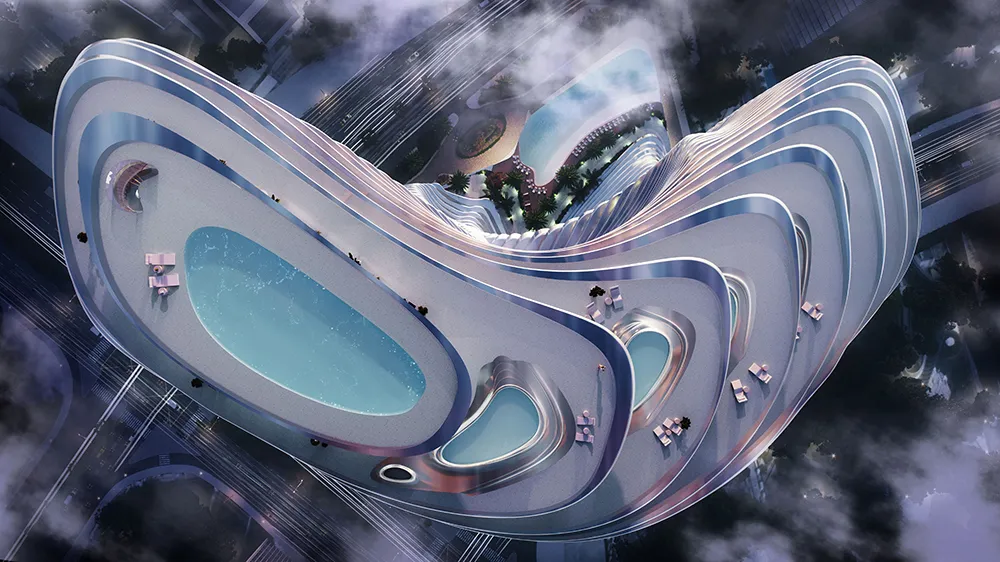
Together with the developer Binghatti, they set out to bring the elegance of the Côte d’Azur to the Emirates, designing a shimmering skyscraper with breathtaking fluidity. The Bugatti Residence’s twin footprints curve into a single metallic form reaching to the desert sky like a static chrome lava lamp bubble. Floor-to-ceiling windows provide oceans of sunlight and wondrous views to each of the 171 Riviera Mansions residences and 11 Sky Mansion penthouses, every one unique with a bespoke layout.
Whether it be Aston Martin, Porsche, Bentley, or Bugatti, the development process follows a similar path: a real estate developer owns a piece of undeveloped land, and they discern which luxury brand would work best with their property, regardless of category. Of course, organic relationships go a long way; Rimac notes their partner’s founder, Muhammad Binghatti, was a longtime fan of their brand before conversations even began.
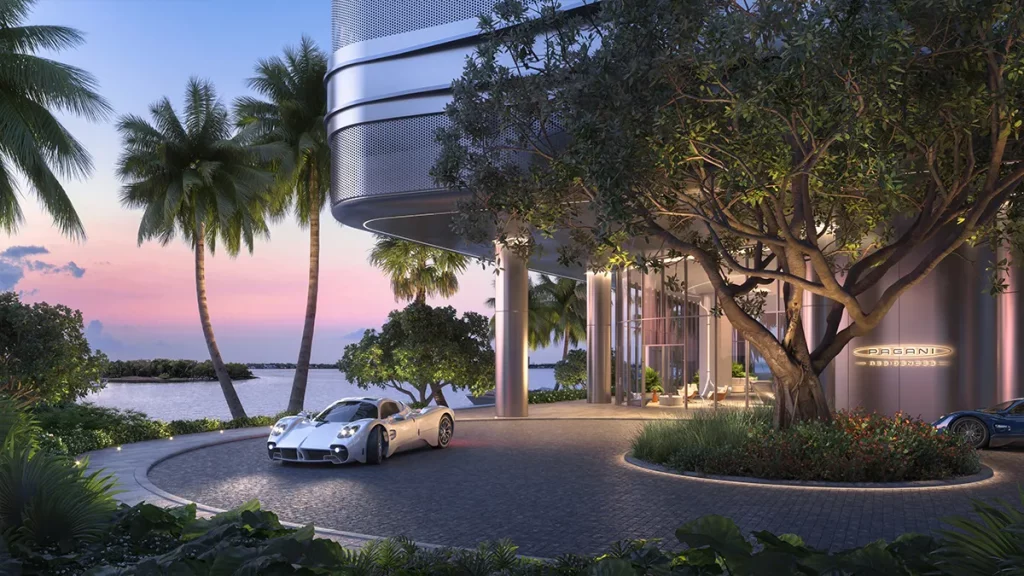
For the bespoke Italian hypercar builder Pagani, founder Horacio Pagani’s son Chris lived in Miami and was friendly with local developer Riviera Horizons’ CEO and founder Mikael Hamaoui. Riviera Horizons had purchased a small parcel in the uber-exclusive three-island North Bay Village area and recognized the plot’s smaller size and uber-exclusive peninsula location would require a partnership with a brand as exclusive and enigmatic as the development itself. When Hamaoui discovered Pagani was looking to develop a branded residence project, the opportunity seemed kismet.
“Pagani had that sense, ‘Hey, North Bay Village is going through a major renaissance right now,’” Hamaoui recalls of early conversations. “They understood how this area is actually going to be one of the most societal places to live over the next five to 10 years, and this is where they want to be.’”
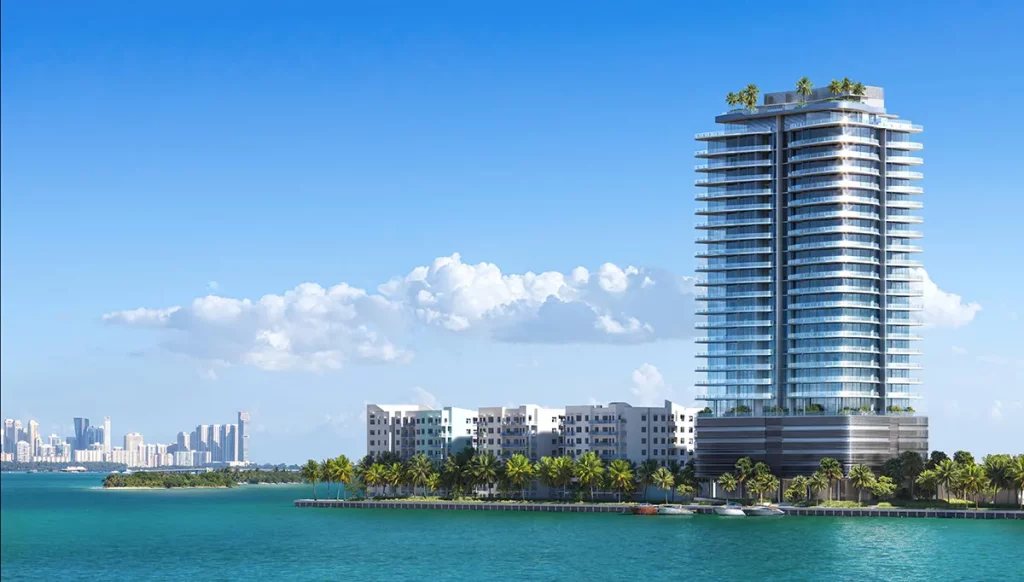
The relatively small footprint of the building limits the number of units but also bequeaths the 29-story building with intimate touches more massive buildings could never match. With only four units per floor (two- to four-bedroom units range from 2,000 to over 3,300 square feet), each one of the 70 units boasts expansive waterfront views of Biscayne Bay with 11-foot ceilings that soar to 13 feet in the penthouses. Every residence is a corner unit with huge terraces on two sides, ranging from over 800 to 1,040 square feet.
“We couldn’t design that product in another location, not in Surfside, Edgewater, Brickell or anywhere else,” Hamaoui explains of the unique makeup of North Bay Village. “Pagani produces about 50 cars a year. They’re not interested in building one of these mega buildings—it had to be something aligned with their core values, which is something very bespoke, very curated, very special, and very unique.’”
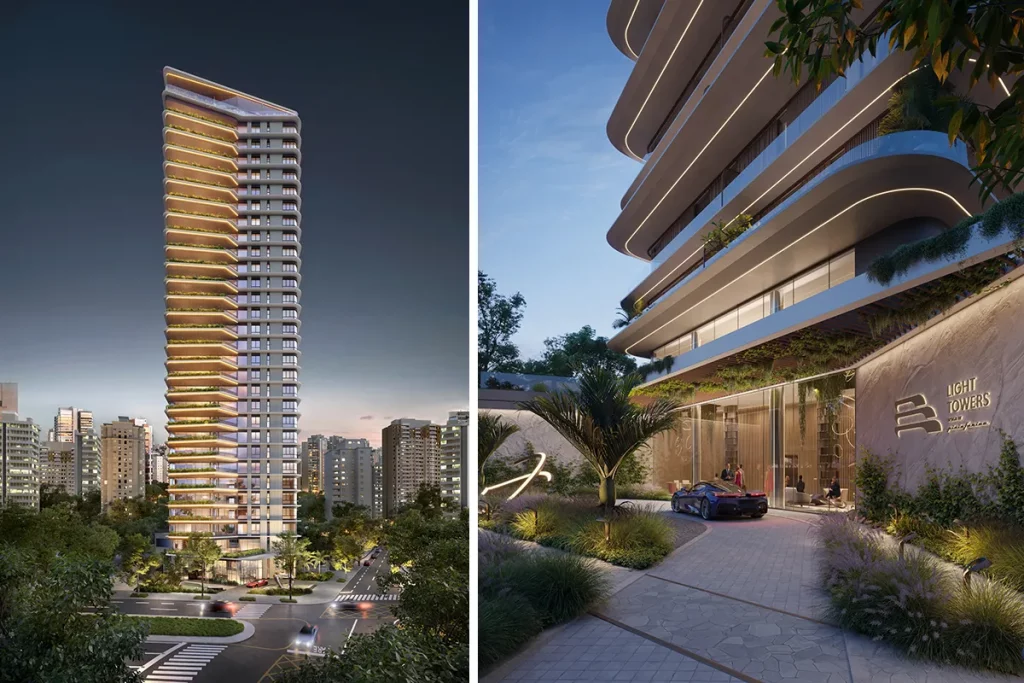
“If the Pagani Residence had 200 units, that would fail miserably because that’s just not Pagani,” argues Carucci, underscoring how the success of these projects relies on authentic collaboration and the ability to match a five-star hotel’s elevated level service and broad suite of pampering amenities. With only 70 units to handle, Boston’s top-rated Sotheby’s agent postulates Riviera Horizons and Pagani will offer the same level of precise tailoring and expert craftsmanship that the Italian automaker delivers with its hand-built automobiles.
“People are not going to buy a home for a crystal chandelier. They’re going to buy a home for the location, for the floor plan they like, and because it’s a luxury brand they feel will bring real product differential,” argues Carucci. “Someone’s not going to buy a Dolce & Gabbana house because they wear Dolce & Gabbana suits. But if you own a Pagani and you want to have a place in Miami, you’re probably going to want to buy the Pagani [Residence].”
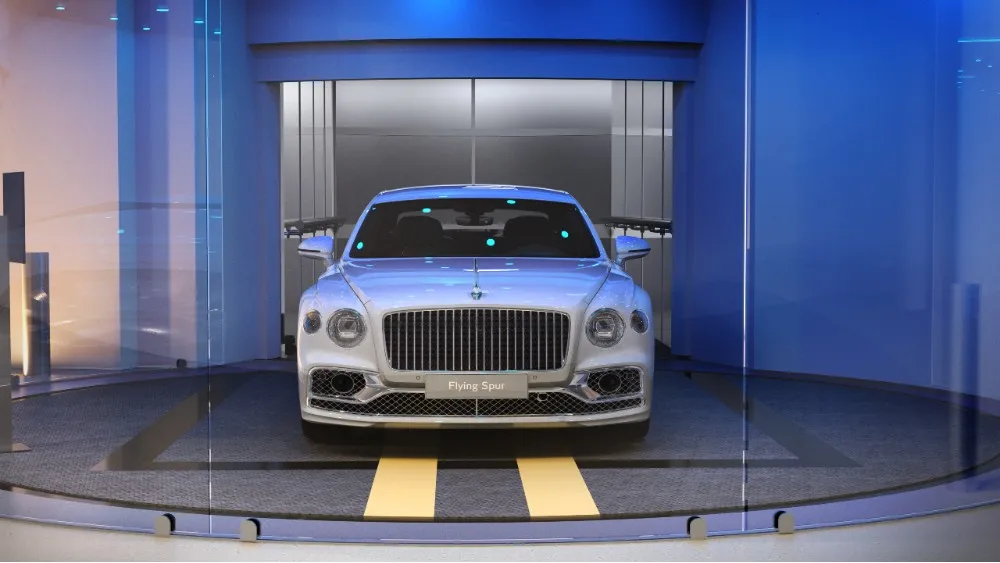
Another strong advantage automotive marques inherently command is a baked in aesthetic, a recognizable visual design DNA that in some cases boasts decades of heritage. These signature design cues provide an easy yet powerful way for designers to integrate a brand’s language into the exterior and interior that a fashion label, hotel chain or jeweler simply cannot. This is especially potent in communal spaces such as lobbies, spas, rooftop pools, and parks.
With all the automotive brands Robb Report spoke with, the development of the buildings was not merely surfacing from the automotive side; rather, dedicated design teams worked hand-in-hand with the developer’s architecture firms to build the structures from a white sheet design.
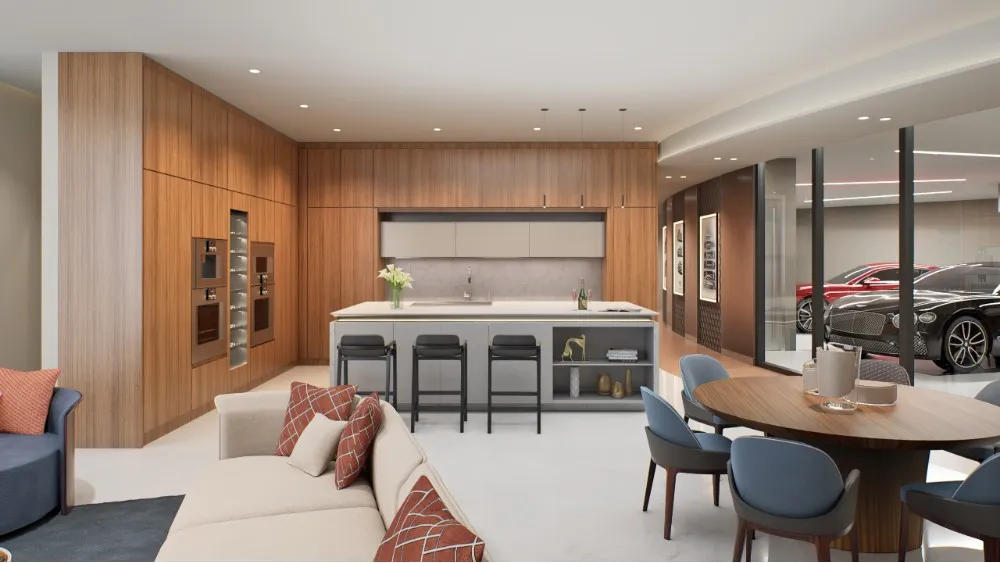
“With [architecture firm] Sieger Suarez, we sat down together and sketched out the architecture, challenged each other on the art of the possible and pushed the industry to create a building as unique as the brand,” reveals Chris Cooke, Head of Design Collaborations at Bentley Motors concerning their Bentley Residences Miami.
“There are references to our cars throughout the residence, from the Bentley signature diamond motif carefully echoed in the diamond-shaped glass facade panels to the diamond-shaped tiles of the lobby.” He adds finer touches that perhaps only dedicated aficionados might notice, such as lobby pillars with wood veins ingrained in copper dust, a visual nod to Bentley’s stunning EXP 100 GT concept car.
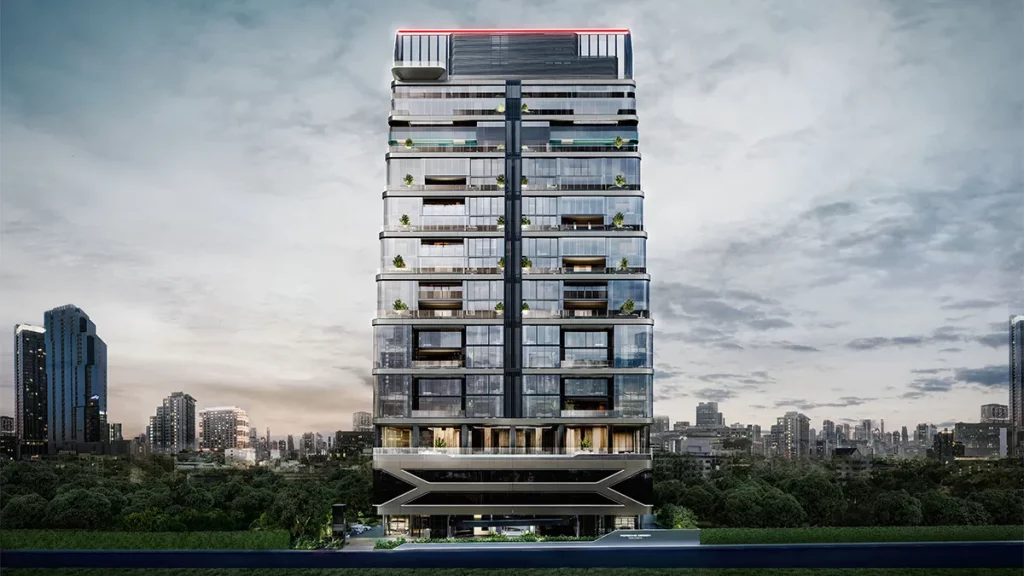
Another singular advantage automotive-branded residencies offer is the ability to implement four-wheeled creations directly into the visual makeup of the building, be that with specialized parking museums, showcasing vehicles in lobby locations, or, better yet, allowing owners to display their seven-figure vehicle as a work of art inside their own apartment.
Residential towers from Bentley and Porsche worked with Dezer Development to offer a patented ‘Dezervator’—a transparent elevator that lifts supercars into private spaces that serve as an apartment’s center stage, not just integrating their cars into their living space but literally transforming them from utilitarian machines into objets d’art. The Bugatti Residence offers a similar feature.
“Bentley cars and Bentley residences are both born out of a passion for design, craftsmanship and personalization,” says Cooke about the venerable British marque entering the luxury real estate sector. Clearly the financial advantages are lucrative, but the opportunity to expand a beloved brand’s badge from a simple hood ornament into a literal home is perhaps harder to resist. “The aim in both cases is to deliver luxurious, wow-factor moments to our customers,” the Head of Design Collaborations states. “It allows us to craft distinctive residential offerings that not only resonate with but also expand our brand identity beyond traditional automotive boundaries.”

